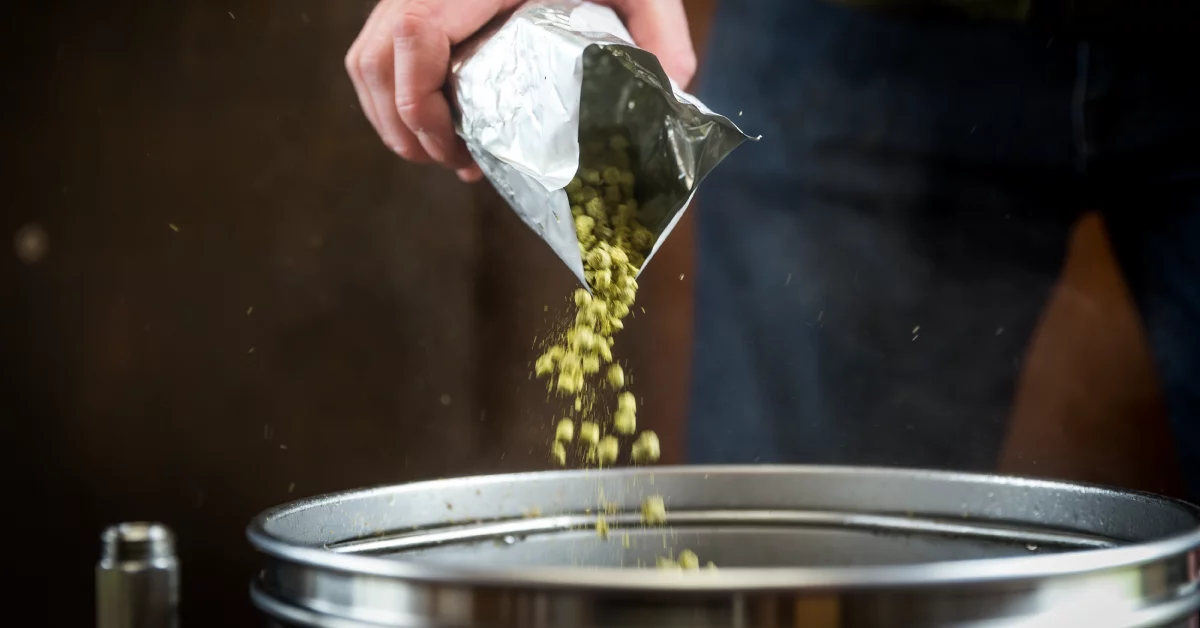For a brew to be classified as a beer, it must contain hops.
Hops are the flowers, or cones, of the Humulus lupulus plant that are packed full of oils and resins. These pale green cones help keep beer fresher for longer and contribute towards the flavour, bitterness and aroma. In this article, we look at the different hop classes, types and forms, and how to use hops in the beer brewing process.
Hop Classes
With hops being a plant, the place it is grown has a big impact on the flavour and aroma it contributes. The biggest hop producing countries are the United States and Germany, with the UK, Czech Republic, Australia and New Zealand also adding to the varieties.
These days, hops are typically broken into two classes.
Old world hops
These are the traditional hop varieties used in the older brewing styles from Europe. They tend to focus on herbal, earthy and floral aromas/flavours and have a soft bitterness with lower alpha acids.
New world hops
These are the hop varieties developed from the latter half of the 20th century. They tend to be bold with mostly citrus and fruity flavours and aromas with high alpha acids.
Types of Beer Hops and How to Use Them
There are two different types of beer hops added at different stages in the brewing process for different effects.
Bittering hops
Bittering hops are added during the boiling step. They are primarily there to produce bitter notes, to balance out the malty and alcohol sweetness and help to preserve the beer.
Flavour and aroma hops
Flavour and aroma hops are added during or after fermentation. This step, known as ‘dry-hopping,’ produces more aromatics and flavours. It also allows the lighter notes of the hops, that would otherwise be lost in the boil, to come through.
To better understand the hops in your brew, the IBU can give a good indication of how much has been used in the boil. IBU or International Bitterness Units is the unit of measurement for bitterness and is based on the level of iso-alpha acids dissolved in the beer. IBU can be used to help formulate a recipe for the beer’s final bitterness.
Note: Alpha acids are the main bittering agent in hops and are expressed as a percentage of the total weight of the hop.

Forms of Hops
Beer hops come in several forms to suit a particular purpose.
Fresh hops
These are hops that come straight from the hop bine without any processing. Fresh hops are not readily available all year round, so they are mainly used during the hop harvest season as something different and as a celebration of beer. They are typically used during the boil as they contain many microorganisms that can spoil a beer.
Whole cones
These are the dried and blended version of fresh hops and are the traditional form of hops that brewers use. However, there is more variation in the alpha acids of this form and they tend to absorb more wort than other forms of hops, resulting in more beer loss.
Pellet hops
Pellet hops are a milled version of the whole cones that are pressed into pellets at low temperatures so that the oils don’t oxidise. This is the most common form of hops used by brewers as they are readily available and have a consistent alpha acid concentration, flavour and aroma.
Pellets come in several “strengths” in relation to alpha acids. The lowest of these is the American noble hops, then T90 hops, T45 and then the cryo/lupulin pellets/powder.
Hop extract
Hop extract is as it sounds – extracted hop oils. It is not commonly used by homebrewers and is mostly used to control the flavour and/or aroma of the beer. Hop extract can also control the IBU of the final beer. It can be added post-fermentation to make multiple commercial batches taste the same.
What form of hops do you typically use?
If you’re new to brewing and are looking to up your knowledge, check out the rest of our Brewing 101 articles. Leave a comment below or contact us on [email protected] if you have any questions. We’re happy to help!
